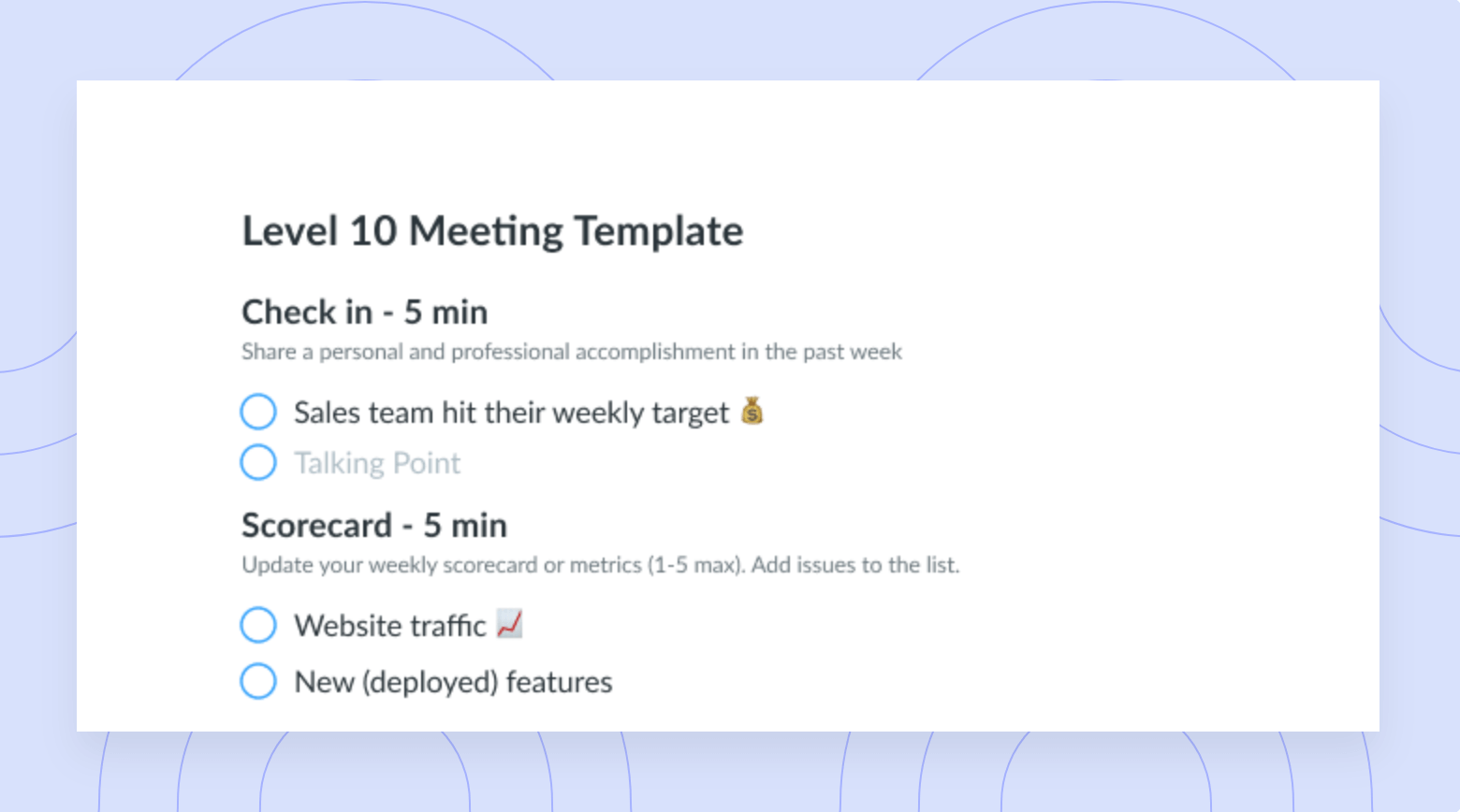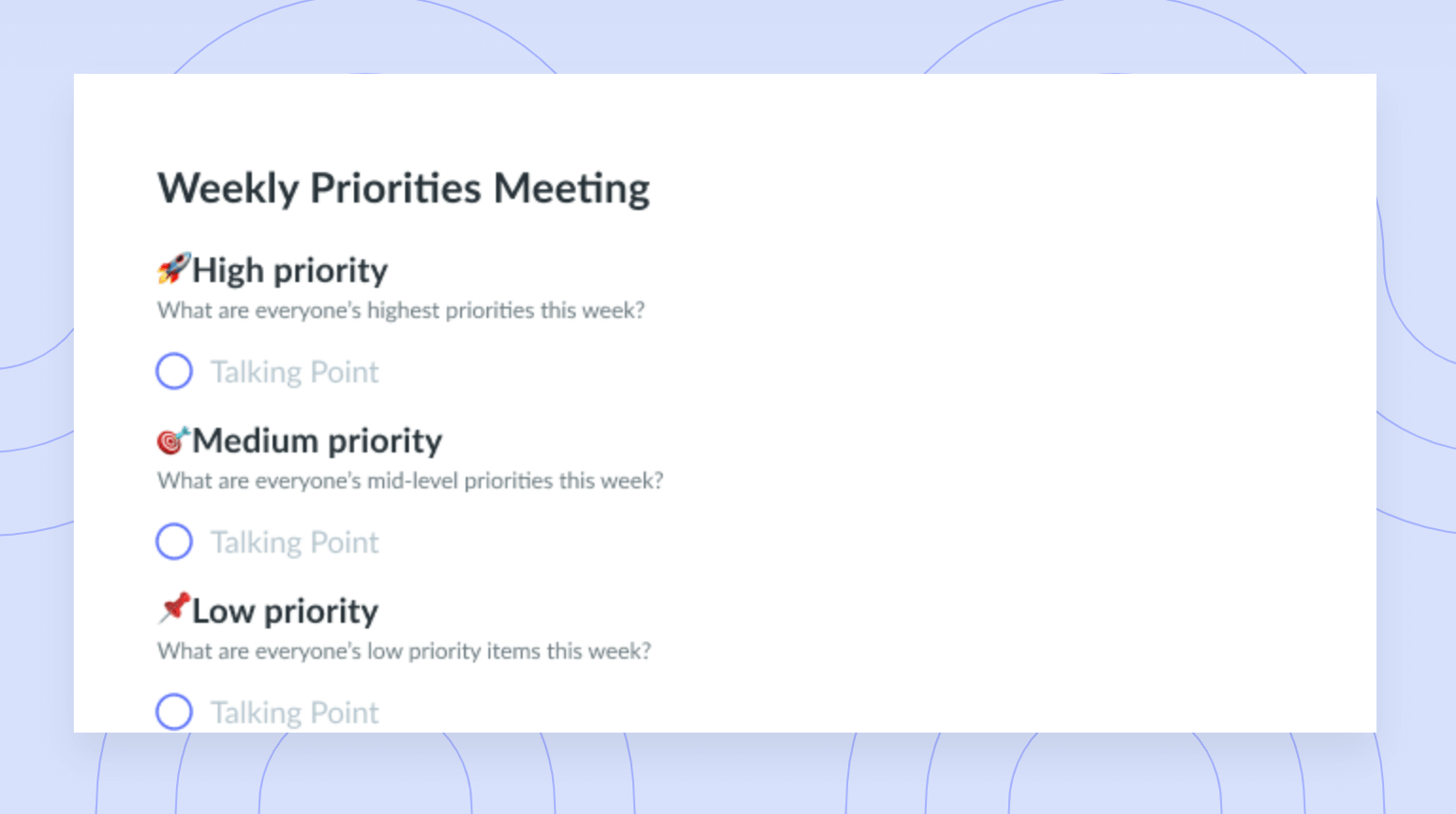Companies Are Canceling Meetings—Should You?
Discover why tech companies are experimenting with canceling meetings and learn why meetings are still meaningful in the digital age.
This year, a few popular tech giants made headlines when they announced they were scrapping meetings for a dedicated period of time as an experiment to free up employee time.
Shopify—Canada’s e-commerce platform—kicked off 2023 by nixing meetings for their employees for two weeks. Other companies like Gitlab, Asana, and Slack surprised employees when they followed in a similar fashion. The no-meetings trend comes as burnout and mental health issues are on the rise and productivity concerns increase.
Read on to explore why tech companies are canceling meetings, which companies have eliminated them, the pros and cons of canceling meetings, how to politely decline a meeting, and why meetings are still valuable tools you can use to boost productivity today.
- Why tech companies are canceling meetings
- What companies revised their meetings?
- Pros and cons of refreshing your calendar
- The value of employee time
- How to politely decline a meeting
- Should companies cancel meetings?
Why tech companies are canceling meetings
There are a few key reasons some tech companies have decided to cancel meetings for short periods of time. Freeing up employee time has been a huge incentive for organizations. Our research shows that employees attend an average of 11 to 15 meetings per week. Of these meetings, the most common type is team meetings, with 89% of employees attending one every week.
“I think there are too many meetings that we are in as leaders that don’t have a clear purpose. If we are subtracting things to place an emphasis more on, you know, purposeful meetings that create connection, create community, create focus, that’s great.”
– Tim Magwood, Partner and Co-founder of 1-DEGREE/Shift
Companies opting into the meeting-free lifestyle believe that time spent in meetings can be used for deep work. Shopify, for example, believes that uninterrupted time is the most precious resource of a craftsperson and wants employees to be able to focus on what is of the highest priority to them at any given point in time. Shopify went a step further by giving employees the power to reject meetings to which they’re invited.

Run efficient meetings, come to a decision, and get back to work
Have meetings worth showing up to and boost engagement and productivity with a collaborative meeting agenda. Try a tool like Fellow!

What companies revised their meetings?
Several companies made the move to reduce meetings to increase productivity and eradicate bad meeting habits that arose during the pandemic. Here are a few examples of how different companies are approaching the fewer to no meetings policy:
- Shopify: The e-commerce giant got rid of all meetings for two weeks at the beginning of 2023. For a two-week period at the beginning of January, recurring meetings with three or more people, all meetings on Wednesdays, and meetings with 50 people or more outside of Thursdays from 11 a.m. to 5 p.m. were canceled. The goal was to not overwhelm employees with meetings that leave little time in the work day for individual tasks.
- Gitlab: The software platform has implemented annual meeting cleanup days to determine which recurring meetings are necessary and reset if needed.
- Asana: In 2022, the project management tool conducted a series of experiments called “meeting doomsday.” Workers deleted all meetings and only added back the ones that were of actual value.
- Slack: The messaging app has Focus Fridays, where teams at the company cancel all internal meetings, and employees are encouraged to turn off their notifications to work without interruptions. Executives also practice calendar bankruptcy occasionally, a task that involves removing all recurring meetings, including one-on-ones, from their calendars to consider each one and add back only what is truly necessary.
Pros and cons of refreshing your calendar
1Pros
- Helps reprioritize your time: When you take meetings out of the equation for a short period of time, you may realize that you have long time blocks to complete deep work, brainstorm big-picture ideas, and knock items off your to-do list.
- Gives you your calendar a fresh start: With too many meetings, your work calendar will look daunting and unmanageable. Eliminating meetings can give your calendar a fresh start and empower you to use a time-blocking methodology to optimize efficiency.
- Helps you see which meetings are crucial: When you aren’t overwhelmed with meetings, it’s much easier to take a step back and determine which ones are important and which ones can be asynchronous or scrapped altogether.
2Cons
- Loss of information: It’s challenging to encourage knowledge sharing—the process by which learning and information can be exchanged—without meetings. Without meetings, there also aren’t collaborative meeting agendas or meeting notes to track task progress.
- Miscommunication: Meetings are a chance to generate new ideas, coordinate work, and create consensus. Without them, teams may be at risk for miscommunication and will have to find other ways to keep one another in the loop.
- Longer decision-making processes: Meetings are a time to make decisions with all involved individuals present. If your team doesn’t host any meetings, the group will need to find other ways to connect to reach common ground and resolve problems.
The value of employee time
Your meetings may be costing you more than you think. Use Fellow’s Meeting Cost Calculator to see how much it costs to bring your team together. For example, if 10 teammates with an average annual salary of $85,000 meet for 1 hour on a twice-weekly basis, these meetings will cost your company $43,000 per year.
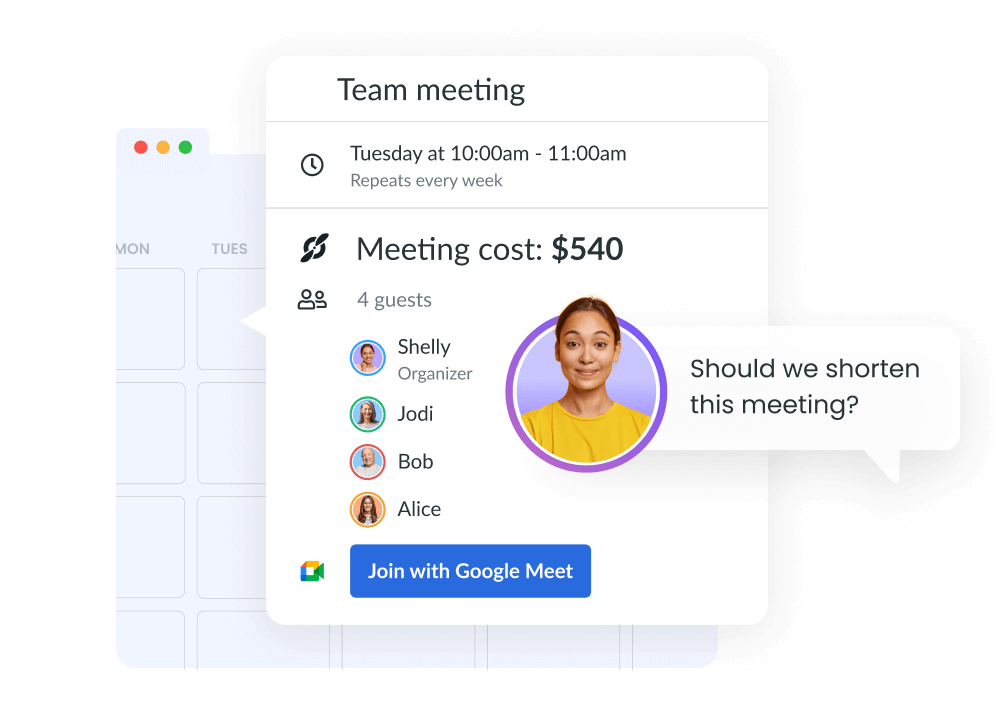
How to politely decline a meeting
It can be challenging to decline meetings, even when we know they aren’t worth our time. Before you decline, you should feel confident in your reason for not attending. While you don’t have to share your reasons, the meeting organizer may still ask. Remember that it’s okay to say, “no” and that there are ways to decline politely.
Here are some examples of how you can politely decline a meeting depending on the type of interaction.
1In person
If your colleague asks you in person if they can schedule some time in your calendar to discuss a topic that doesn’t warrant a meeting, you can politely decline by saying something like:
“Thanks for reminding me about project X. I won’t be available to meet, but if you send me a quick note with any new details that have come up since the last time we spoke, I’d be happy to get started on my deliverables. I’m always available to chat via email or Slack if you want to discuss ideas!”
2By email
The next time you receive a meeting request by email and want to politely decline, you can say:
“Hi [meeting organizer name],
Thank you for inviting me to the meeting on topic X. Unfortunately, I won’t be able to attend at the scheduled time. I understand the importance of this meeting and would like to speak with you about my action items beforehand if you’re available to chat.
Thanks very much, and please let me know a date and time that work for you.
[your name]”
3Over instant messaging
If you want to informally notify a colleague by MS Teams or Slack that you can’t attend, send them a message like this:
“Hey [meeting organizer name]. Thanks so much for inviting me to Friday’s meeting. While I’m away on vacation and am therefore unavailable to attend, feel free to Slack me if you want to discuss project details or need me to work through any of the action items listed in the meeting agenda. Talk soon!”
Should companies cancel meetings?
Absolutely not! It’s not necessary to cancel meetings if they serve a purpose and help teams build rapport, remove blockers, and be more productive overall.
Each company should familiarize itself with criteria for how to run an effective meeting. Teams should start by setting a clear meeting objective that outlines their why. The meeting organizer should then create a collaborative meeting agenda that will help keep everyone on the right path during the meeting. The agenda should outline talking points and topics, and leave space for action items and next steps. It should also be distributed to all attendees at least 24 hours in advance so everyone has a chance to add their own points.
The next step to hosting a successful meeting is assigning a note-taker. Meeting notes should always be organized and concise as they inform decisions and document challenges and anything else worth noting. If necessary, the meeting organizer can assign other meeting roles as well.

During your meeting, jot down action items in real time so everyone is clear on expectations once the meeting ends. One by one, go through the topics outlined and aim to stay on topic and within the outlined timeframe. Conclude with a plan of attack so everyone leaves knowing exactly what they need to do next. Give all action items clear deadlines and leave room for questions and answers, too.
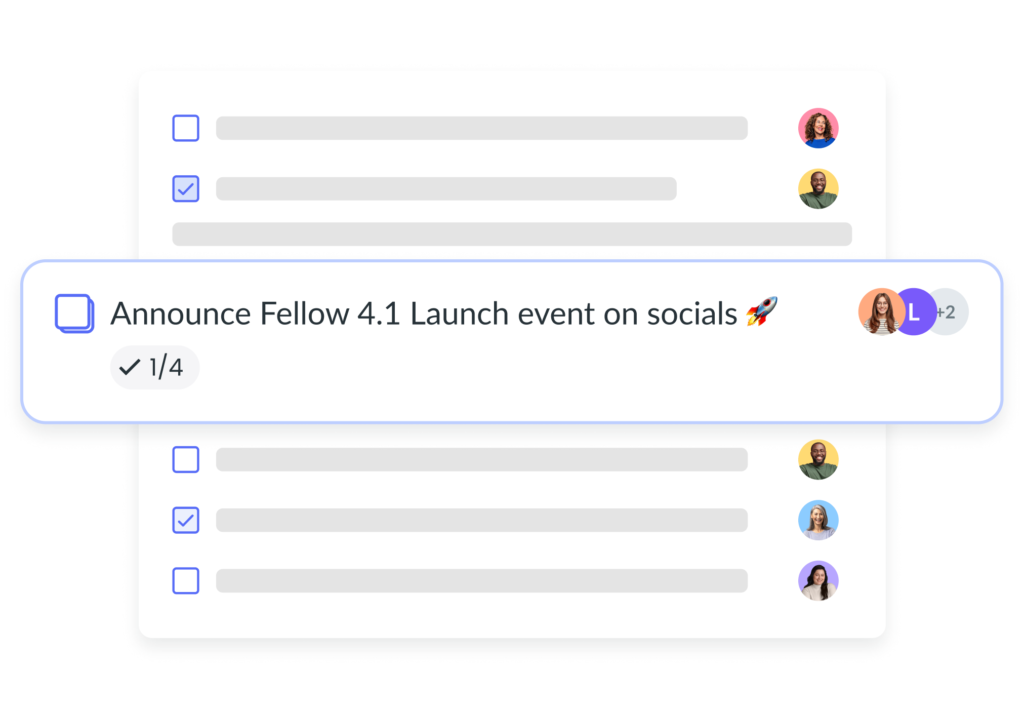
The last criterion for a great meeting is feedback. Once you send your agenda with meeting notes and action items, provide your teammates with meaningful feedback and ask that they do the same!
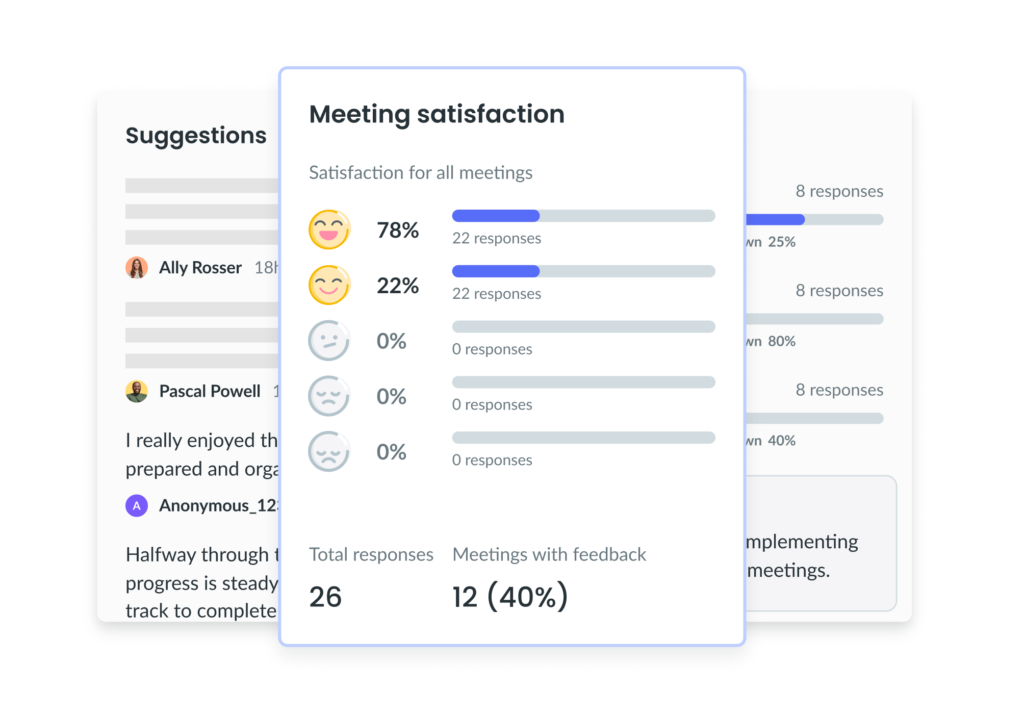
Parting advice
While some meetings aren’t worth the time, don’t think that meetings are #canceled forever! Fellow is the place to start if you want to have productive team meetings and meaningful one-on-ones that don’t waste time or cost your team thousands! Use our tool to build collaborative meeting agendas, record decisions, and keep each other accountable.
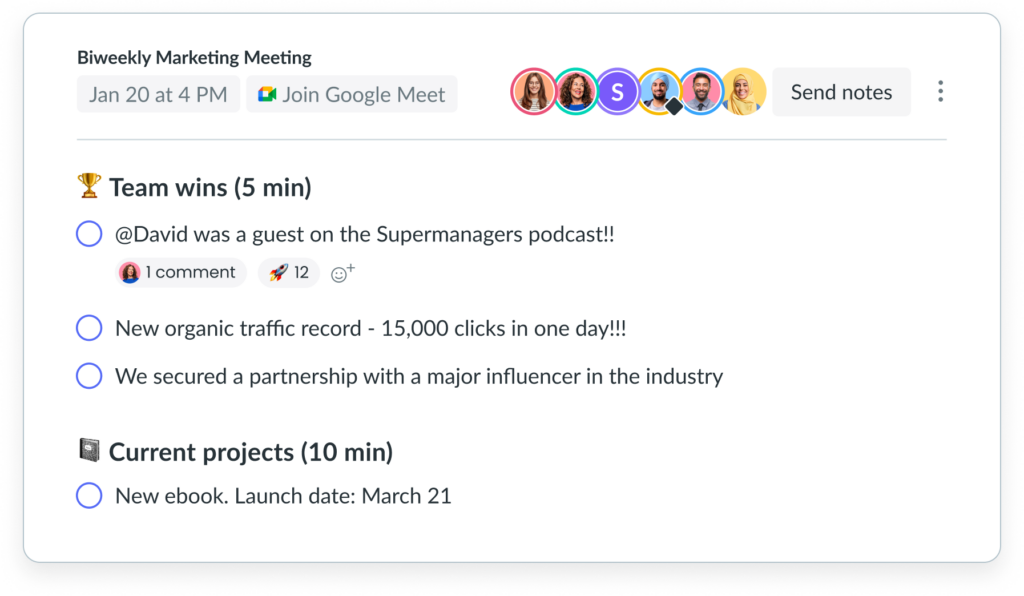









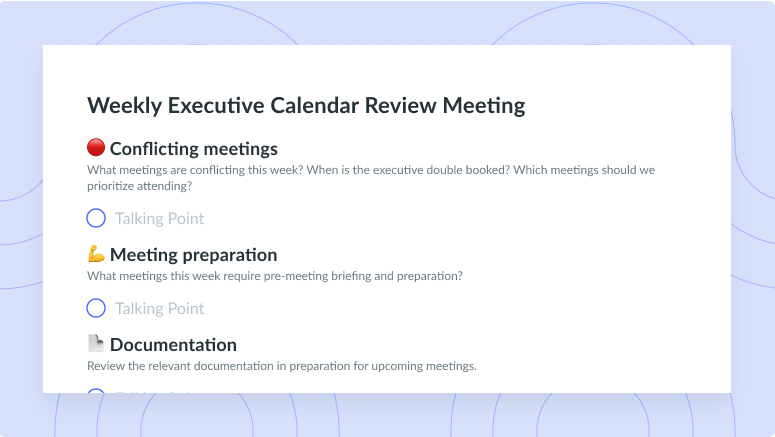
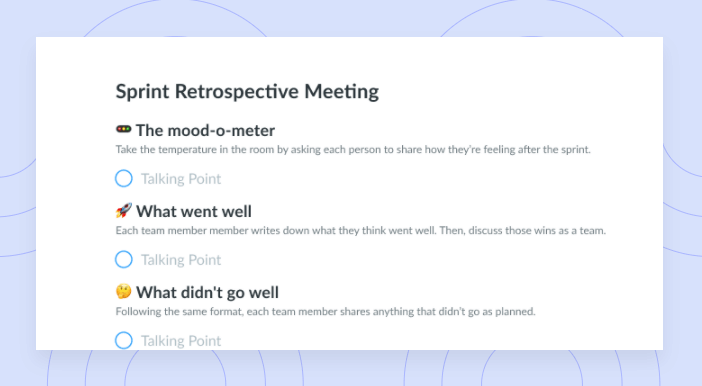

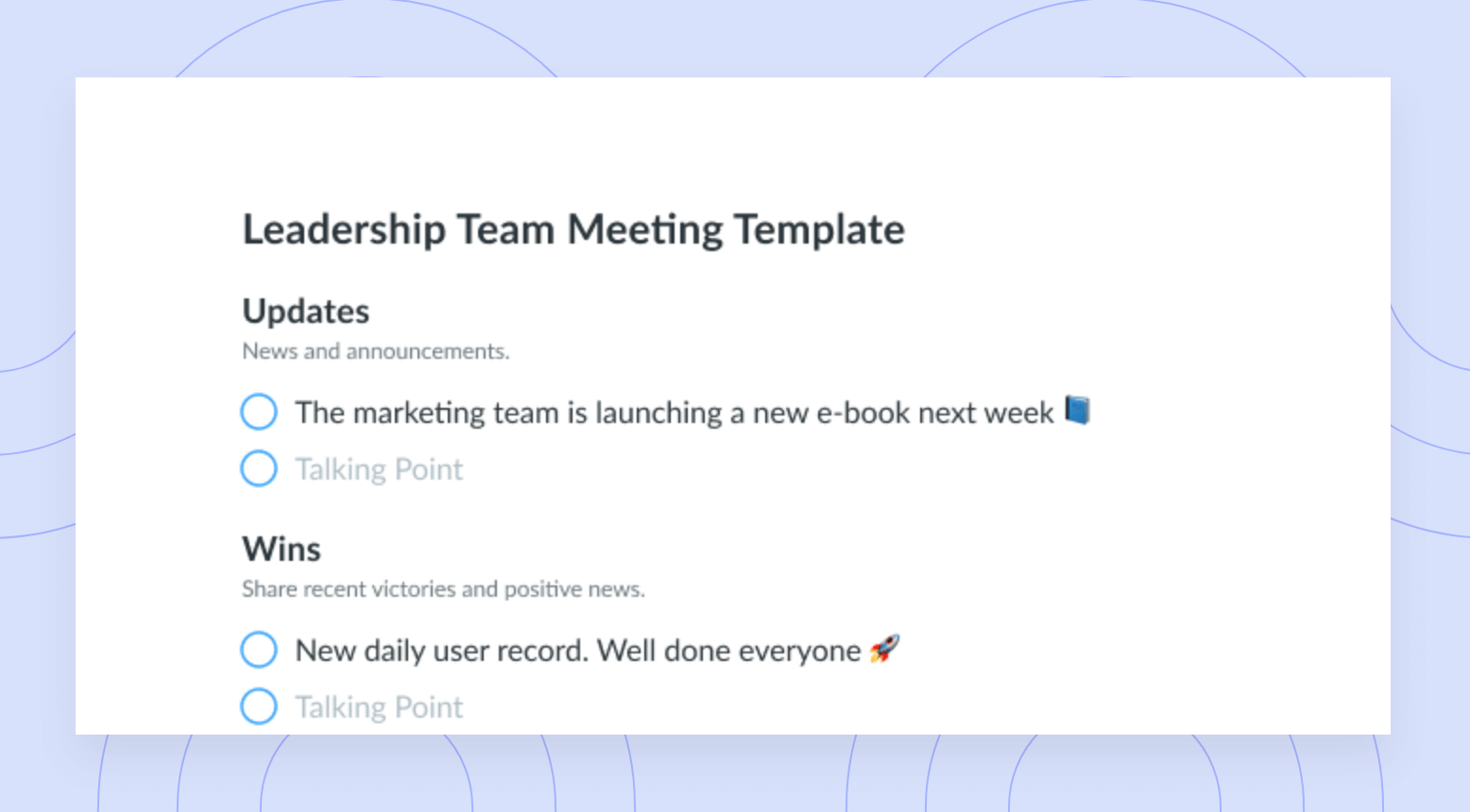
![What? So What? Now What? [Reflection Meeting] Template](https://fellow.app/wp-content/uploads/2021/08/What-So-What-Now-what-preview-v2.png)

